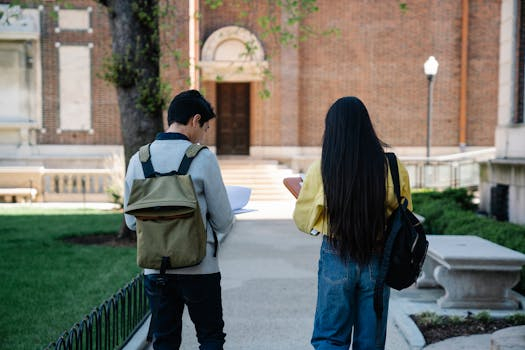Building a Positive School Culture Together
Creating a positive school culture is essential for the success and well-being of students, teachers, and the entire school community. A positive school culture enables students to thrive and learn, encourages teachers to excel in their teaching, and fosters a sense of belonging among all who are part of the school. But building a positive school culture is not a solo act – it requires all members of the school community to come together, collaborate, and be committed to the cause. In this article, we will explore the various ways in which we can build a positive school culture together.
The Role of School Administrators
School administrators play a vital role in shaping the school culture. They are responsible for setting the tone and vision of the school, and their actions and decisions directly impact the school’s culture. As leaders, they should be mindful of their communication, behavior, and decision-making processes. It is essential to involve all stakeholders – teachers, students, parents, and staff – in decision-making and seek their feedback. This approach creates a sense of inclusivity and empowers everyone to contribute to the positive school culture.
The Importance of Communication
Effective communication is key to building a positive school culture. School administrators should have a strong communication plan in place that includes regular updates and encourages open dialogue. Students, teachers, and parents should feel comfortable approaching school administrators with their ideas, concerns, and feedback. This open communication line creates a sense of trust and partnership between all stakeholders, leading to a more positive school culture.
Leading by Example
As a school administrator, it is essential to lead by example. Your behavior, values, and work ethic will be observed by others, and they will emulate them. If you want to foster a culture of respect, honesty, and teamwork, you must demonstrate these qualities yourself. Celebrate and recognize positive behavior and accomplishments within the school community, and this will encourage others to do the same. This type of positive reinforcement goes a long way in building a positive school culture together.
The Role of Teachers
Teachers are at the heart of the school, making their role vital in creating a positive school culture. They are responsible for building relationships with their students, fostering a love for learning, and providing a safe and inclusive learning environment. To build a positive school culture, teachers should focus on building positive relationships with their students, their colleagues, and parents.
Building Positive Relationships
Building positive relationships with students is key to a positive school culture. When students feel connected, supported, and understood by their teachers, they excel academically and emotionally. Teachers should strive to get to know their students and understand their individual needs and strengths. Allow students to have a voice and involve them in decision-making. By doing so, teachers foster a sense of belonging among their students.
Teamwork and Collaboration
Teachers must work together to create a positive school culture. They should collaborate and share resources, ideas, and strategies to enhance their teaching and better support their students. When teachers work together, they create a supportive network, which helps build a positive school culture. Encouraging teamwork also sets a good example for students, teaching them the value of collaboration and teamwork.
The Role of Students
Students have a significant role to play in building a positive school culture. When students feel included and valued, they are more likely to be engaged in their learning and display positive behavior. School administrators and teachers should empower students to take on leadership roles, participate in decision-making processes, and create a culture of positivity within their classrooms.
Creating Student-Led Initiatives
Student-led initiatives, such as clubs, committees, and mentorship programs, provide students with opportunities to make a positive impact within the school community. These initiatives promote a sense of responsibility and encourage students to be proactive in creating a positive school culture.
Recognizing Student Achievement
Celebrating student achievements is an excellent way to foster a positive school culture. School administrators and teachers should recognize and celebrate students’ academic excellence, as well as their positive contributions to the school community. This recognition shows students that their efforts are valued and encourages them to continue striving for excellence.
The Role of Parents and Staff
Parents and school staff are essential members of the school community, and their involvement is crucial in building a positive school culture. When parents are engaged in their child’s education, and staff members feel appreciated and supported, they contribute to creating a positive learning environment.
Encouraging Parent Involvement
School administrators and teachers should actively engage parents in their child’s education. Parents should be encouraged to volunteer, attend school events, and participate in school decision-making. When parents feel involved, they are more likely to support the school’s values and have a positive influence on the school culture.
Recognizing Staff Contributions
School staff members are an integral part of the school, and their contributions should be recognized and appreciated. School administrators should create opportunities to recognize staff members’ hard work and dedication, fostering a sense of camaraderie and teamwork. When staff members feel valued, they are more likely to contribute to a positive school culture.
Building a positive school culture is a continuous process that requires commitment and collaboration from all members of the school community. School administrators, teachers, students, parents, and staff should work together to create a safe, inclusive, and welcoming school environment. By fostering positive relationships, open communication, and celebrating accomplishments, we can build a positive school culture together.







